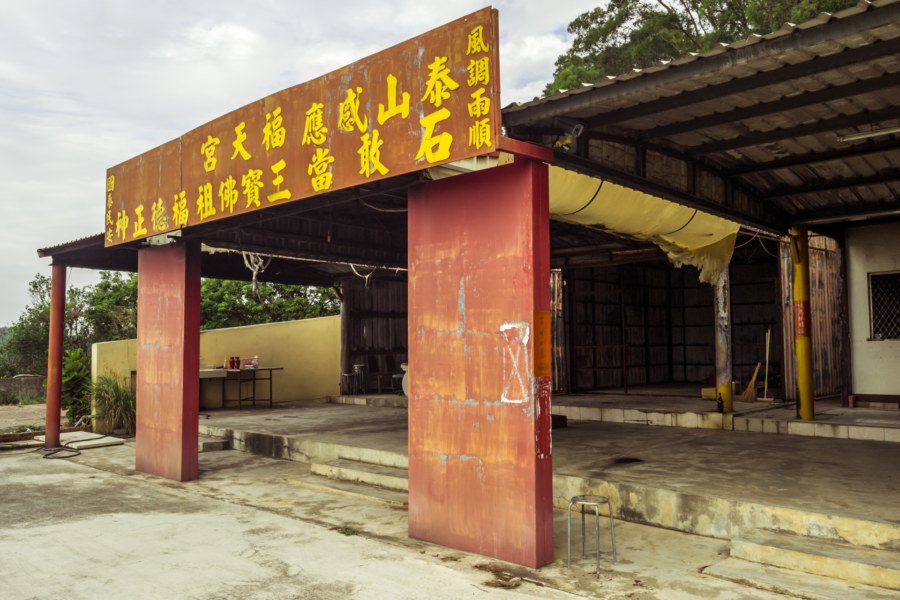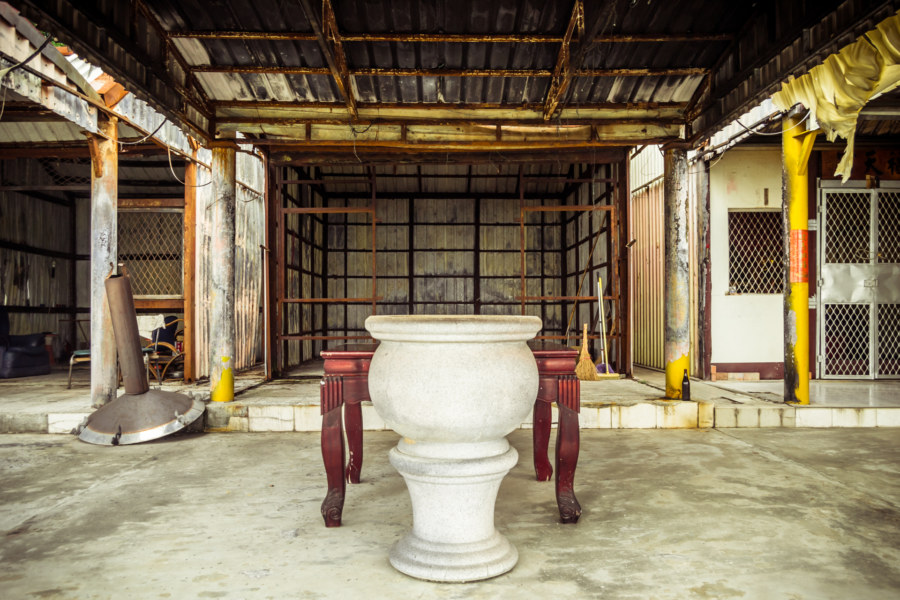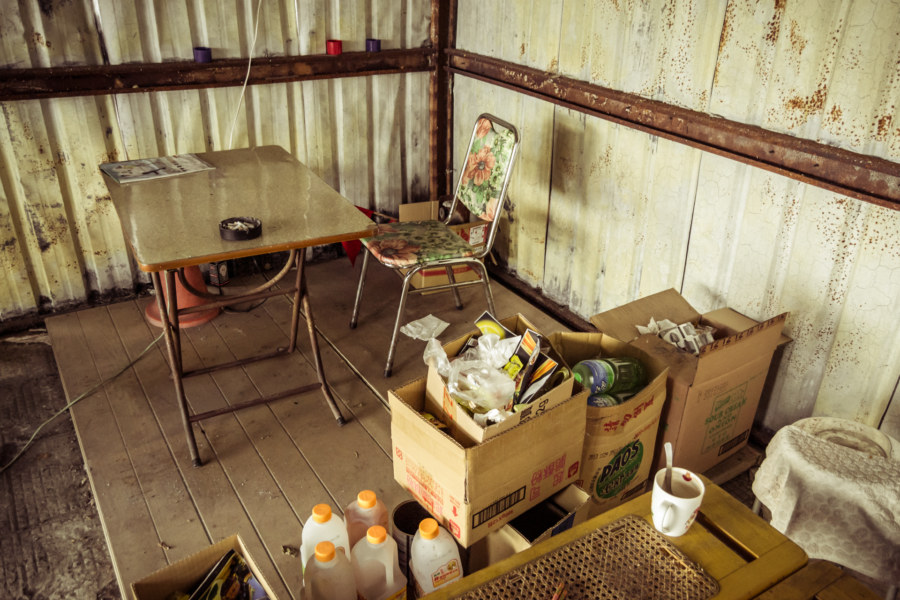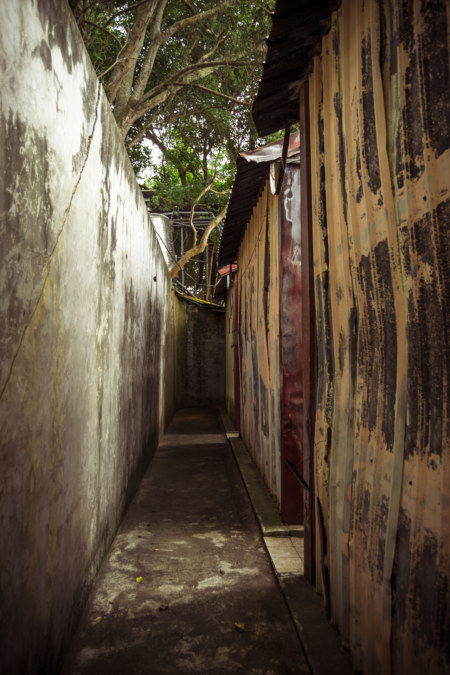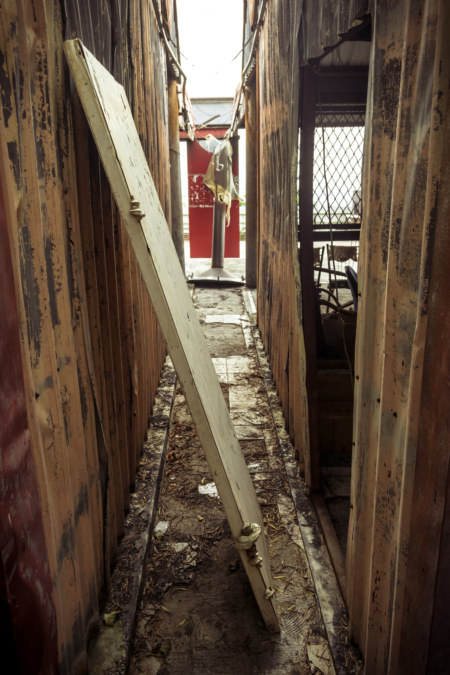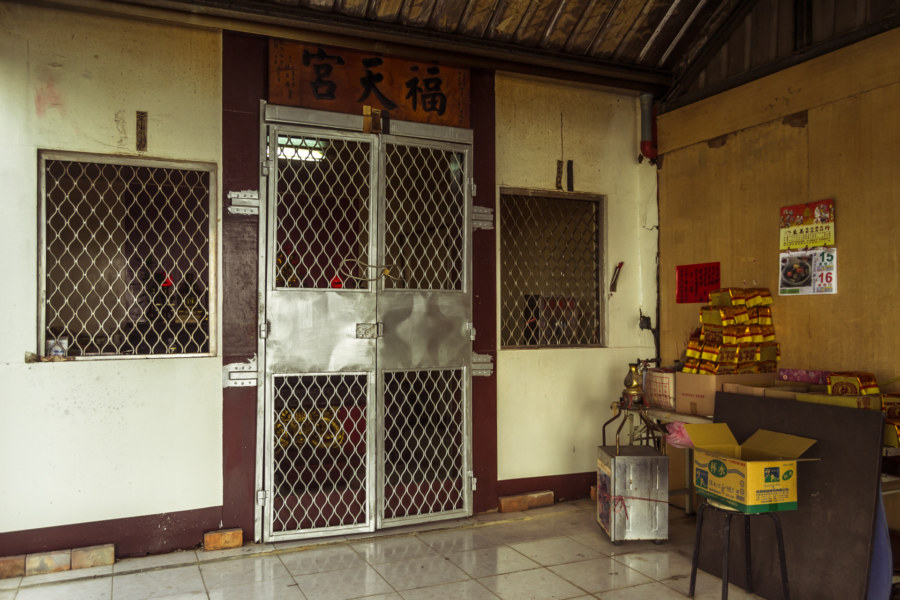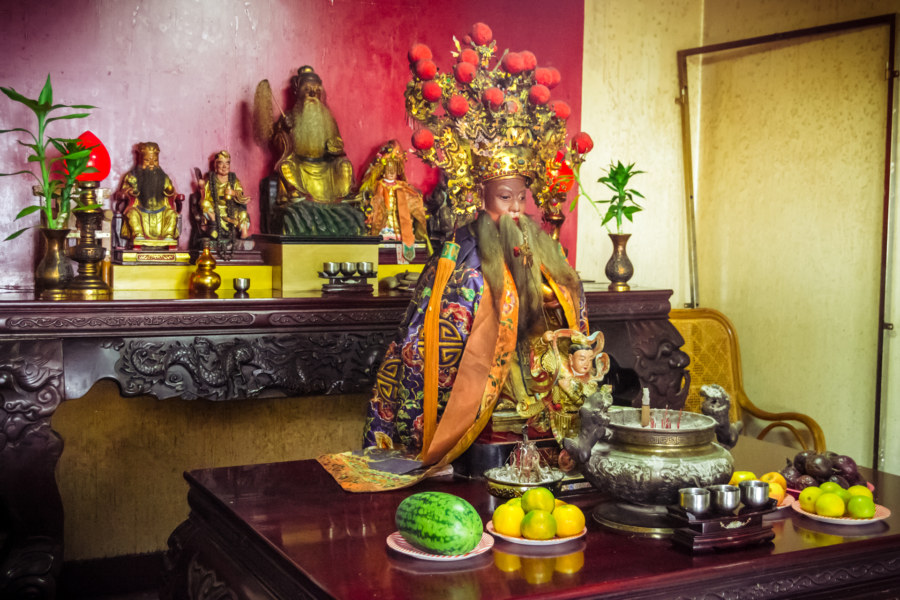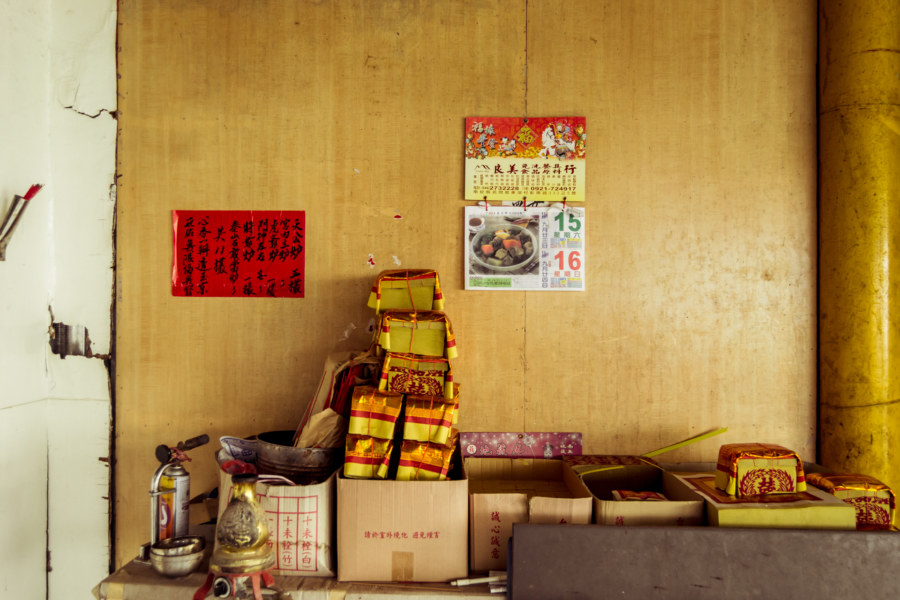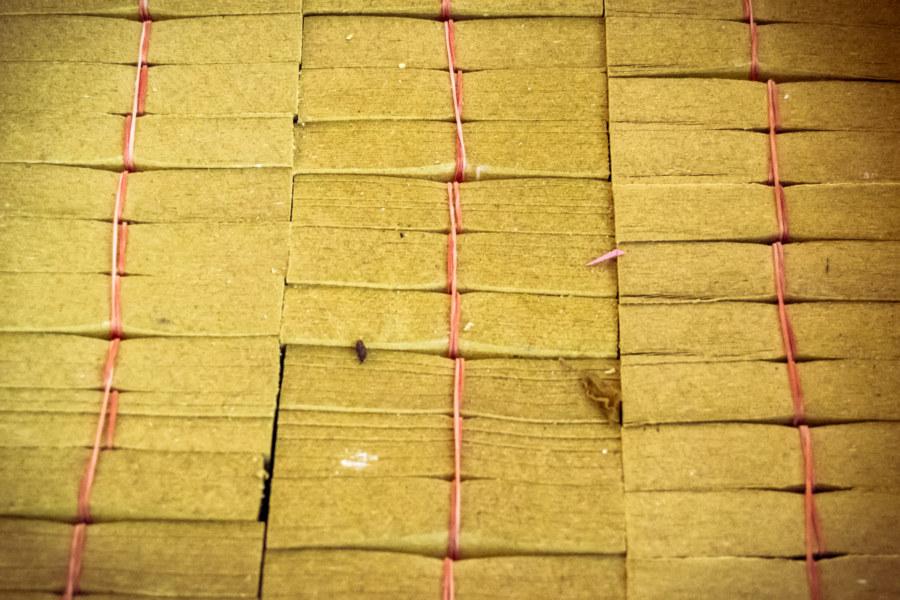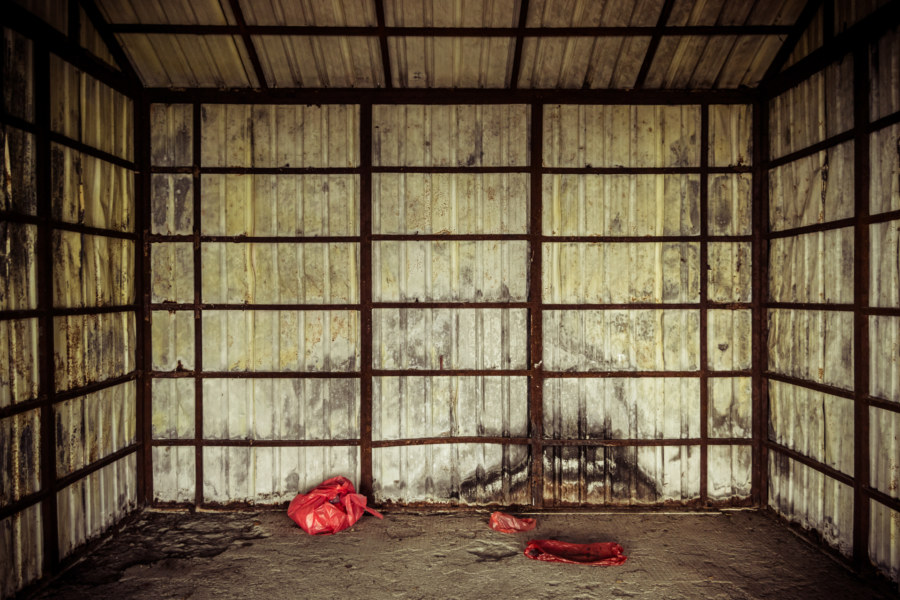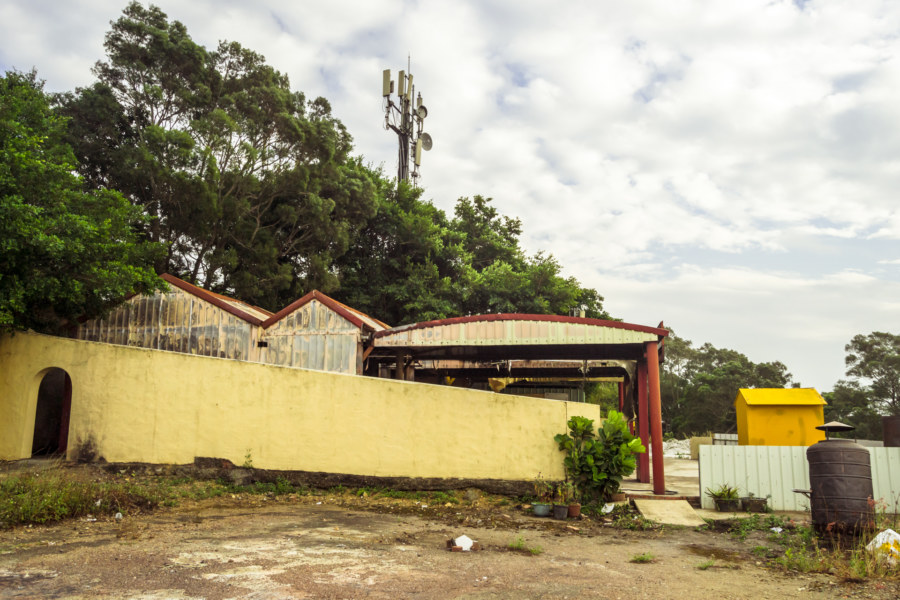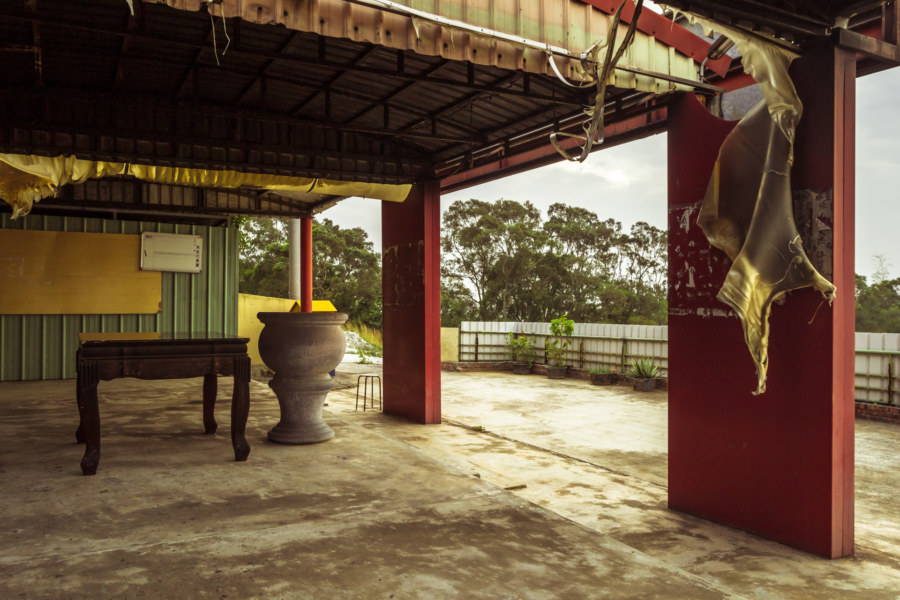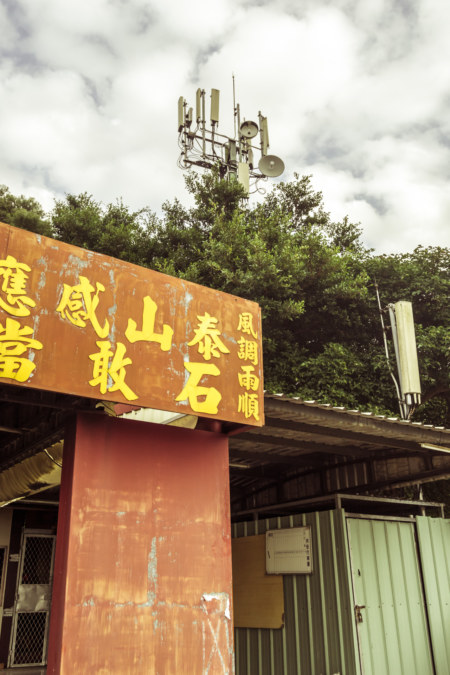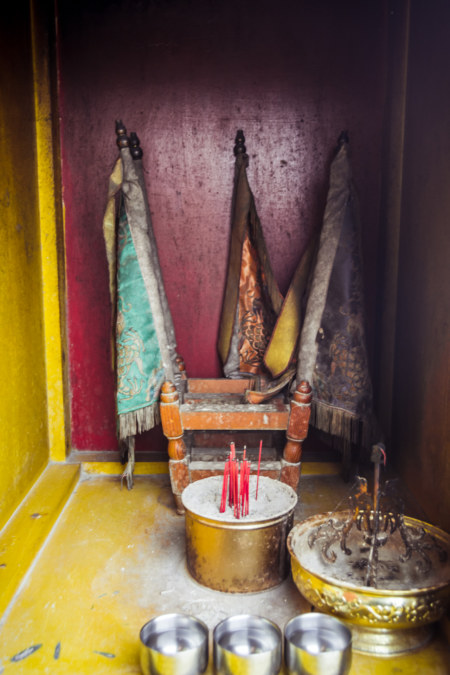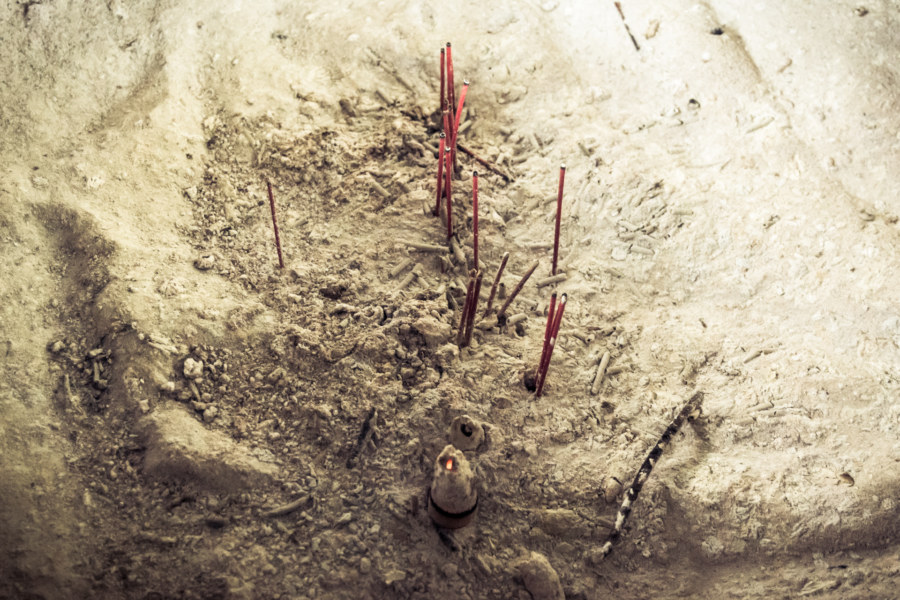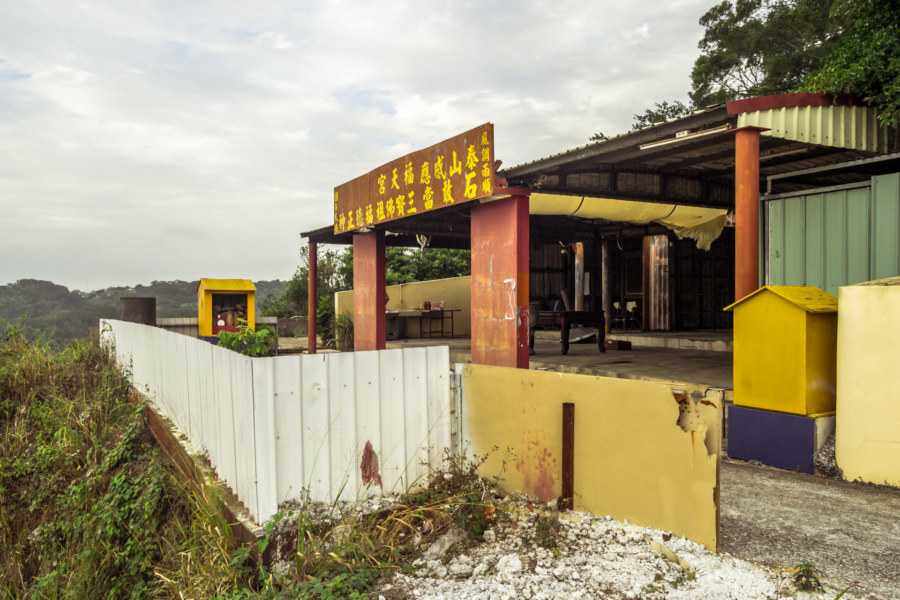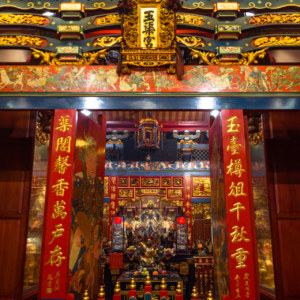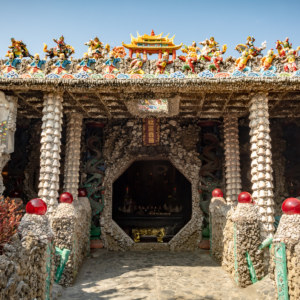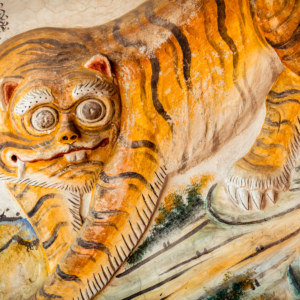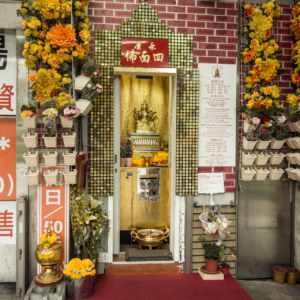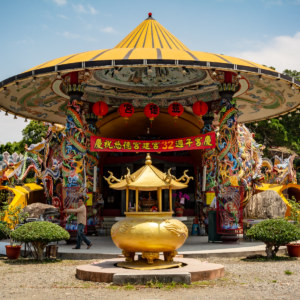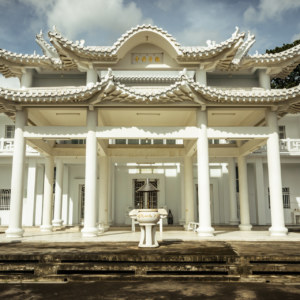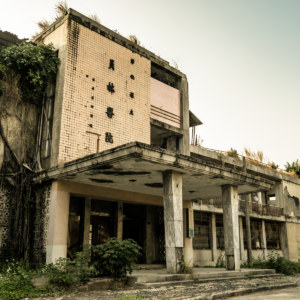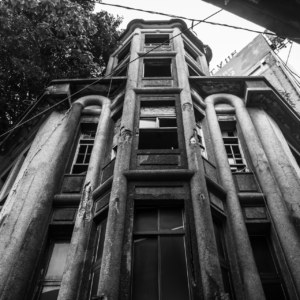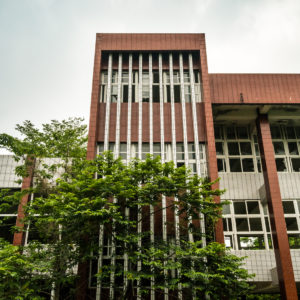High on the upper slopes of the modest Bagua Mountain Range 八卦山脈 (pinyin: Bāguàshānmài) overlooking Dayeh University (pinyin: Dàyè), on the border between Changhua and Nantou in Taiwan, stands a strange half-abandoned temple. It is peculiar in that temples are almost never left to the elements the way this one has been. Abandoned buildings are commonplace in this land of abundant ruins—but even the most obscure temples receive regular maintenance in the form of incense and offerings, among other things. To neglect the gods and spirits is to curse a place with tremendously bad luck and misfortune. Temples may be formally decommissioned, dismantled, and destroyed—but they are almost never simply abandoned or left to decay like this. What’s going on here?
The stark red sign out front reveals several some information and several tantalizing clues1. The name of the temple appears to be Fútiān Temple 福天宮, a common name for temples in Taiwan (hence distinguishing it by putting “Dayeh” in the title). The spiritual artifacts in residence are listed along the bottom of the sign. From left to right: the Taoist God of Land 福德正神, the Three Treasured Buddhas 三寶佛祖, and Taishan stone tablets 泰山感應石敢當 (more on this later). The couplets on either side of the sign, 風調雨順 and 國泰民安, offer a blessing for good weather, peace, and prosperity. I suppose this blessing cascades down the mountainside to the university campus below?
The temple itself—what’s left of it, anyway—looks completely unremarkable. Ramshackle temples like this are common all over rural Changhua. It once housed three gods but only one chamber remains occupied; the other two alcoves are empty sheet metal shells. Much of the temple has been damaged by fire: scorch marks are evident all over the interior and melted plastic awnings dangle from the rooftop. Only the part of the temple to the right remains intact and in use. The doors are locked, however, which is a little weird. Usually temples in Taiwan are completely open to the public. Exploring this one was downright eerie.
It would appear as if the artifacts from the fire-damaged parts of the temple have been relocated to the only shrine still in use. The God of Land is displayed prominently, and you’ll also notice Jì Gōng 濟公, the drunken monk, on the left. What about those stone tablets? I don’t see them in any of my photos—but I also wasn’t looking for them while I was there.
The stone tablets seem to be the key to this mystery. Consider what is said in this book. Shígǎndāng 石敢當, as they are known, are geomantic tools inscribed with an injunction against evil. Tàishān 泰山 refers to Mount Tai, one of the five most holy mountains of ancient China. Stones from this mountain are thought to have special protective powers. Whether the stones at this temple actually originate from Mount Tai is anyone’s guess—apparently imitations are common—but some additional protection may be afforded simply by invoking the name. As for gǎnyìng 感應, which translates to “induction”, I have no idea. Whatever it is, it is clearly within the domain of fēngshuǐ 風水.
More than 10,000 students are enrolled in the university below. As you might imagine there are plenty of rumours that circulate among the student body about this somewhat creepy temple on top of the hill. No doubt the winding road below the temple is the location of many late-night dares and romantic dalliances. There is a general sense that the temple is haunted in some way. In fact, it would appear that the mountain itself is home to some bad mojo—and this temple exists to neutralize whatever malevolent spirits lurk on its flanks. You can just imagine what local people must have thought when the fire broke out.
What, then, explains the lack of maintenance and care? I’d hazard a guess here: nobody feels any particular affiliation to this temple of necessity. Perhaps it is seen as a duty and a chore to maintain—and presumably it’s good enough as long as those magic stone tablets are kept dry.
- In an attempt to divine this mystery I have transcribed the characters on the front of the temple. I had a little help with this but my Chinese language skills are still very basic and I know very little about folk religious practices so I may get some of this wrong. All I really have going for me is curiosity, patience, and a search engine. Corrections are welcome by private message or in the comments! ↩
